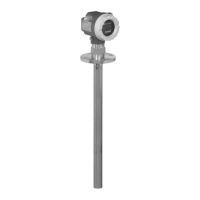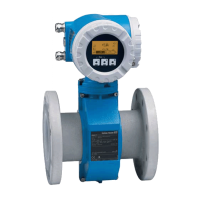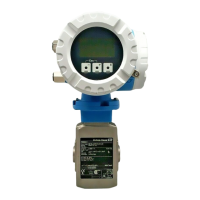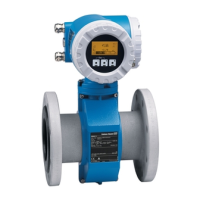Levelflex M FMP40
Endress+Hauser 11
Input
Measured variable The measured variable is the distance between the reference point (see Fig., → ä 43) and the product surface.
Subject to the empty distance entered "E" (see Fig., → ä 4), the level is calculated. Alternatively, the level can
be converted into other variables (volume, mass) by means of linearization (32 points).
Measuring range Level measurement
The following table describes the media groups and the possible measuring range as a function of the media
group.
The respective lower group applies for very loose or loosened bulk solids.
Reduction of the max. possible measuring range through:
• Extremely loose surfaces of bulk solids, e.g. bulk solids with low bulk weight for pneumatic filling.
• Buildup, above all of moist products.
Note!
Due to the high diffusion rate of ammonia it is recommended to use the FMP45 with gas-tight bushing for
measurements in this medium.
Interface measurement
The measuring range for interface measurement is limited to 10 m. Larger measuring range available on
request.
Medium group DC (εr) Typical bulk solids Typical liquids
Measuring range
bare metallic probes PA-coated
Rope probes
1 1.4 to 1.6 - – Condensed gases, e.g. N
2
, CO
2
4 m, only coax probe -
2 1.6 to 1.9
– Plastic granulate
– White lime, special cement
–Sugar
– Liquefied gas, e.g. propane
–Solvent
–Freon
–Palm oil
25 m to 30 m 12.5 m to 15 m
3 1.9 to 2.5
– Portland cement, plaster – Mineral oils, fuels 30 m to 35 m -
– Flour - - 15 m to 25 m
4 2.5 to 4
– Grain, seeds −−25 m to 30 m
– Ground stones
–Sand
– Benzene, styrene, toluene
–Furan
– Naphthalene
35 m 25 m to 30 m
5 4 to 7
– Naturally moist (ground)
stones, ores
–Salt
– Chlorobenzene, chloroform
– Cellulose spray
– Isocyanate, aniline
35 m 35 m
6 >7
– Metallic powder
– Carbon black
–Coal
– Aqueous solutions
– Alcohols
– Ammonia
35 m 35 m

